Family: Tenthredinidae
Family common name: common sawflies
Subfamily: Nematinae
Tribe: Nematini
Genus: Craterocercus Rohwer, 1911
Subgenera: none
The Tenthredinidae are the most species-rich family and are found throughout the world, in all continents but Antarctica. They are known as the “common sawflies.” They can generally be recognized by a cylindrical body and long, segmented antennaeantenna:
the sensory organ emerging from the front of the head, usually between the compound eyes and above the clypeus; includes the flagellum, scape and pedicel
 . Otherwise, they come in a variety of colors, sizes, and forms (Goulet 1992Goulet 1992:
. Otherwise, they come in a variety of colors, sizes, and forms (Goulet 1992Goulet 1992:
Goulet H. 1992. The genera and subgenera of the sawflies of Canada and Alaska: Hymenoptera. Symphyta. The insects and arachnids of Canada. Part 20. Agriculture Canada Publication.).
Nematinae is the second-largest subfamily of Tenthredinidae, with over 1,250 species (Prous et al. 2014Prous et al. 2014:
Prous M, Blank SM, Goulet H, Heibo E, Liston A, Malm T, Nyman T, Schmidt S, Smith DR, Varing;rdal H, Viitasaari M, Vikberg V, and Taeger A. 2014. The genera of Nematinae (Hymenoptera, Tenthredinidae). Journal of Hymenoptera Research 40: 1-69. " target="_blank">https://doi.org/10.3897/JHR.40.7442). They are most diverse in northern Eurasia and North America; only a few species occur in the Southern Hemisphere. Nematinae sawflies have a variety of feeding habits including external leaf feeding, leaf mining, and gall forming, and feed on a variety of hosts (Smith 2003bSmith 2003b:
Smith DR. 2003b. A Synopsis of the sawflies (Hymenoptera: Symphyta) of America south of the United States: Tenthredinidae (Nematinae, Heterarthrinae, Tenthredininae). Transactions of the American Entomological Society 129 (1): 1-45.).
The Nematinae have been subject to numerous revisions in recent years. As of 2021, there are no comprehensive keys to many of the North American species of Nematinae (Prous et al. 2014Prous et al. 2014:
Prous M, Blank SM, Goulet H, Heibo E, Liston A, Malm T, Nyman T, Schmidt S, Smith DR, Varing;rdal H, Viitasaari M, Vikberg V, and Taeger A. 2014. The genera of Nematinae (Hymenoptera, Tenthredinidae). Journal of Hymenoptera Research 40: 1-69. " target="_blank">https://doi.org/10.3897/JHR.40.7442). Because of changing taxonomy and extreme variability in morphology, identifying genera and species in the Nematinae may be more challenging than in other subfamilies of Tenthredindae. For this reason, knowing the host or behaviors of a specimen can be extremely helpful for identification within this subfamily.
Craterocercus are about 6–9 mm in length and mostly black with white, yellow, or red markings and clear wings (Smith 1969aSmith 1969a:
Smith DR. 1969a. The genus Craterocercus Rohwer (Hymenoptera: Tenthredinidae). Proceedings of the Entomological Society of Washington 71 (2): 153-161.).
There are six described species worldwide, all of which occur only in North America (Taeger et al. 2018Taeger et al. 2018:
Taeger A, Liston AD, Prous M, Groll EK, Gehroldt T, and Blank SM. 2018. ECatSymmdash;Electronic World Catalog of Symphyta (Insecta, Hymenoptera). Program version 5.0 (19 Dec 2018), data version 40 (23 Sep 2018). Senckenberg Deutsches Entomologisches Institut (SDEI), Muuml;ncheberg. https://sdei.de/ecatsym/ Accessed: 28 Jan 2020.).
Two incomplete keys to species are included in Smith 1969a and Smith 2003bSmith 2003b:
Smith DR. 2003b. A Synopsis of the sawflies (Hymenoptera: Symphyta) of America south of the United States: Tenthredinidae (Nematinae, Heterarthrinae, Tenthredininae). Transactions of the American Entomological Society 129 (1): 1-45..
Subfamily characters
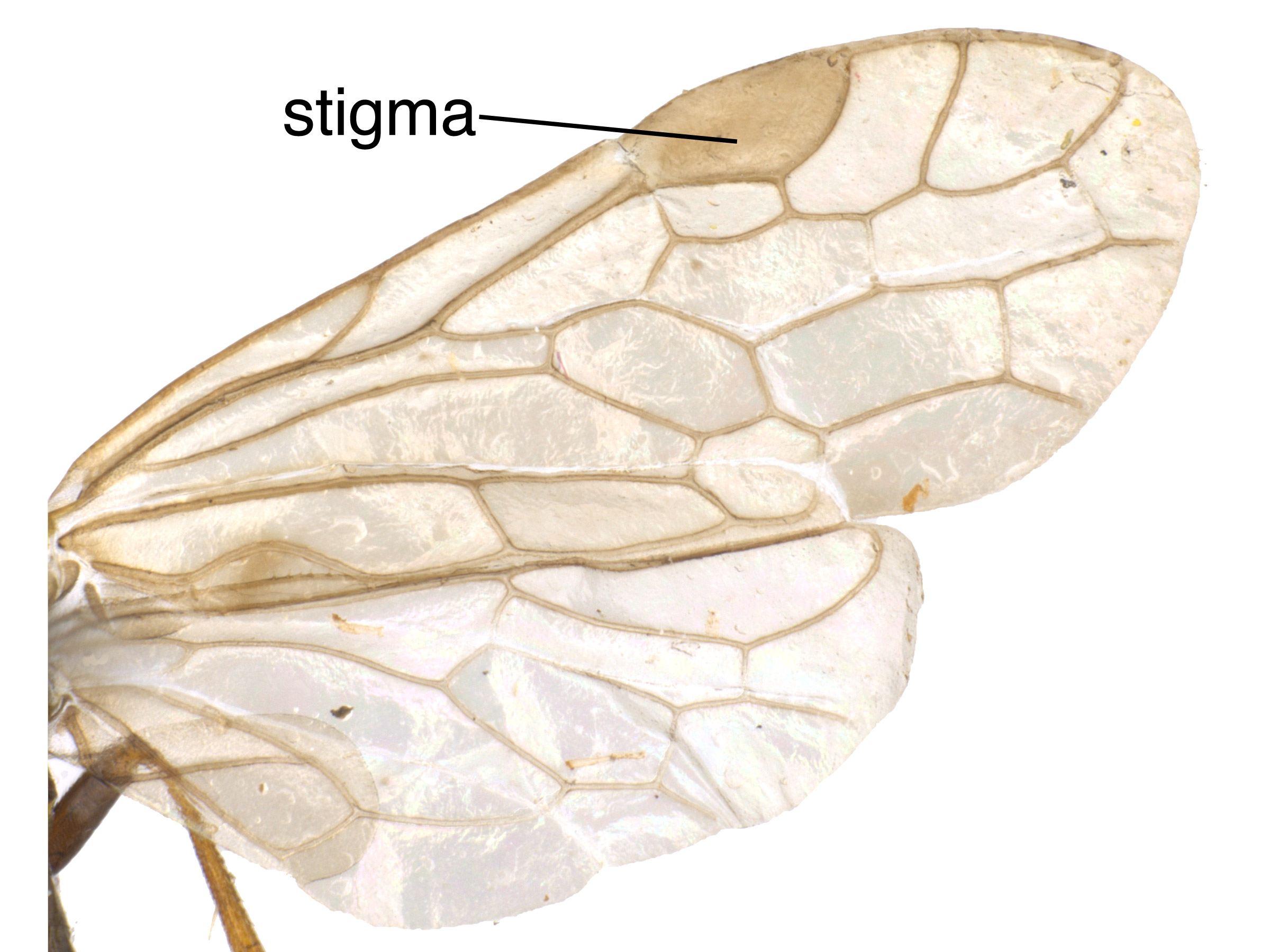 (Goulet 1992Goulet 1992:
(Goulet 1992Goulet 1992: vein 2m-cu meeting cellcell:
vein 2m-cu meeting cellcell: 2Rs or 1Rs very close to veinvein:
2Rs or 1Rs very close to veinvein: 2r-m above (Goulet 1992Goulet 1992:
2r-m above (Goulet 1992Goulet 1992:Genus characters
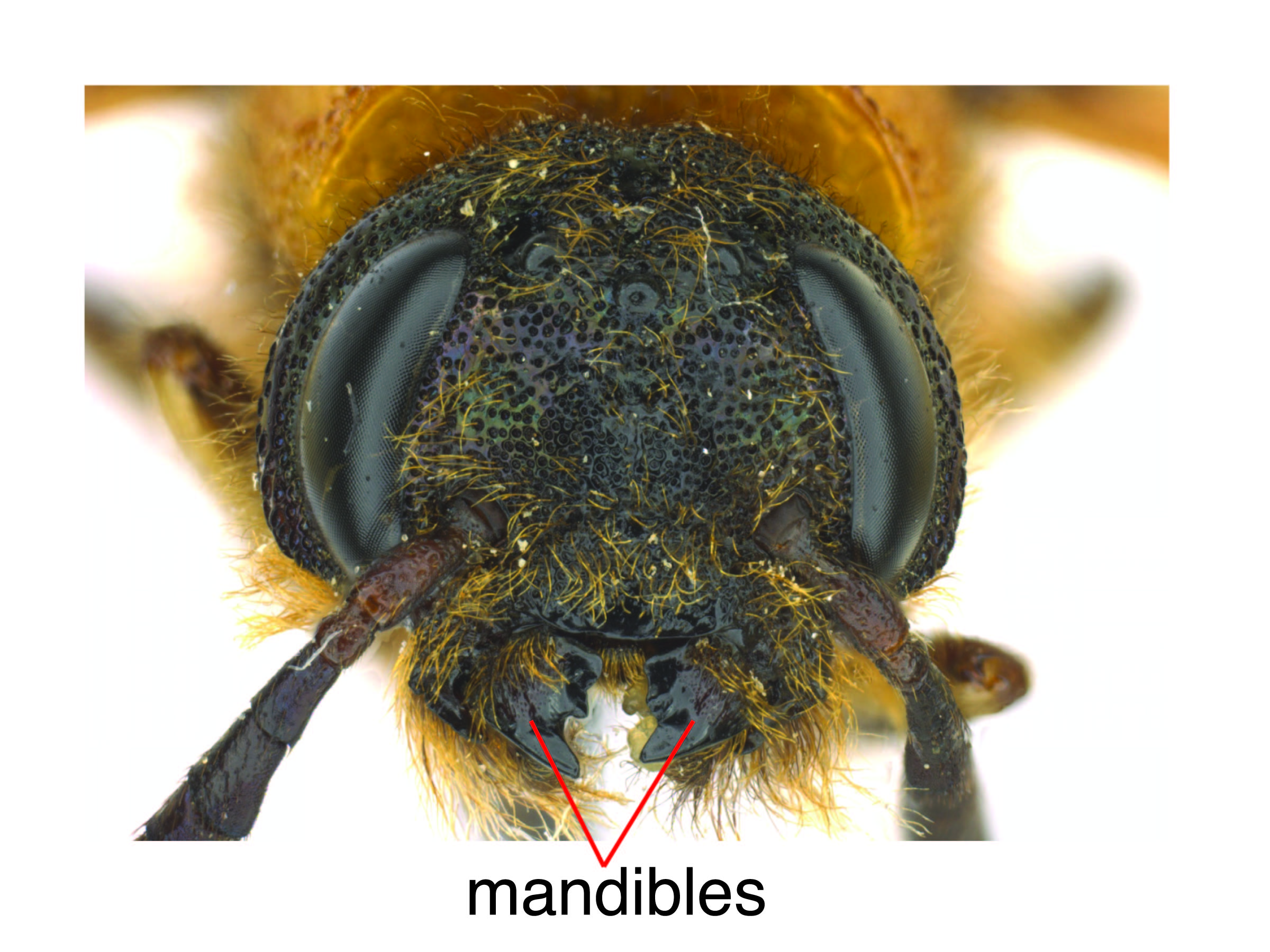 (Smith 2003bSmith 2003b:
(Smith 2003bSmith 2003b: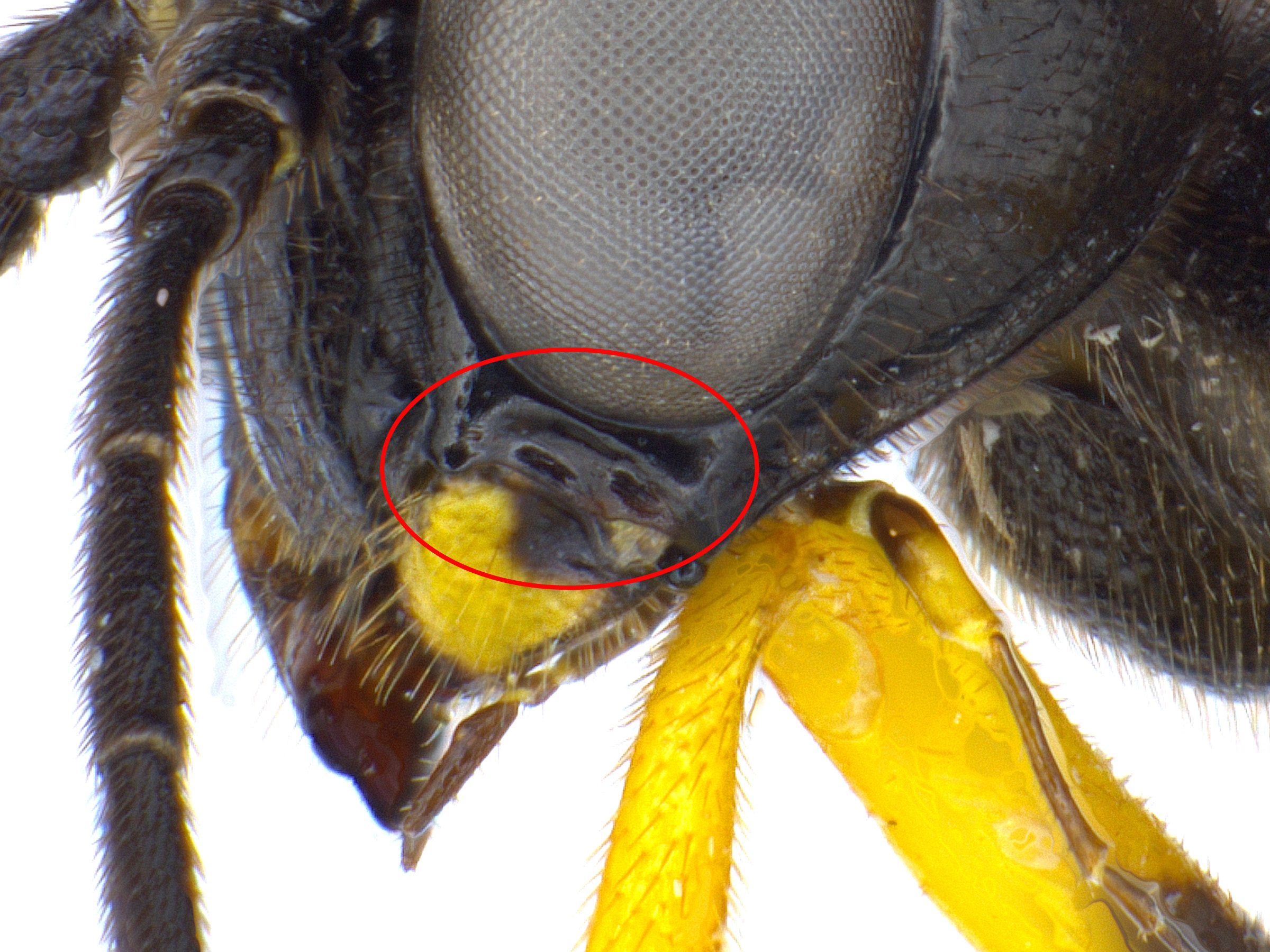 narrow; less than the diameter of the front ocellusocellus:
narrow; less than the diameter of the front ocellusocellus: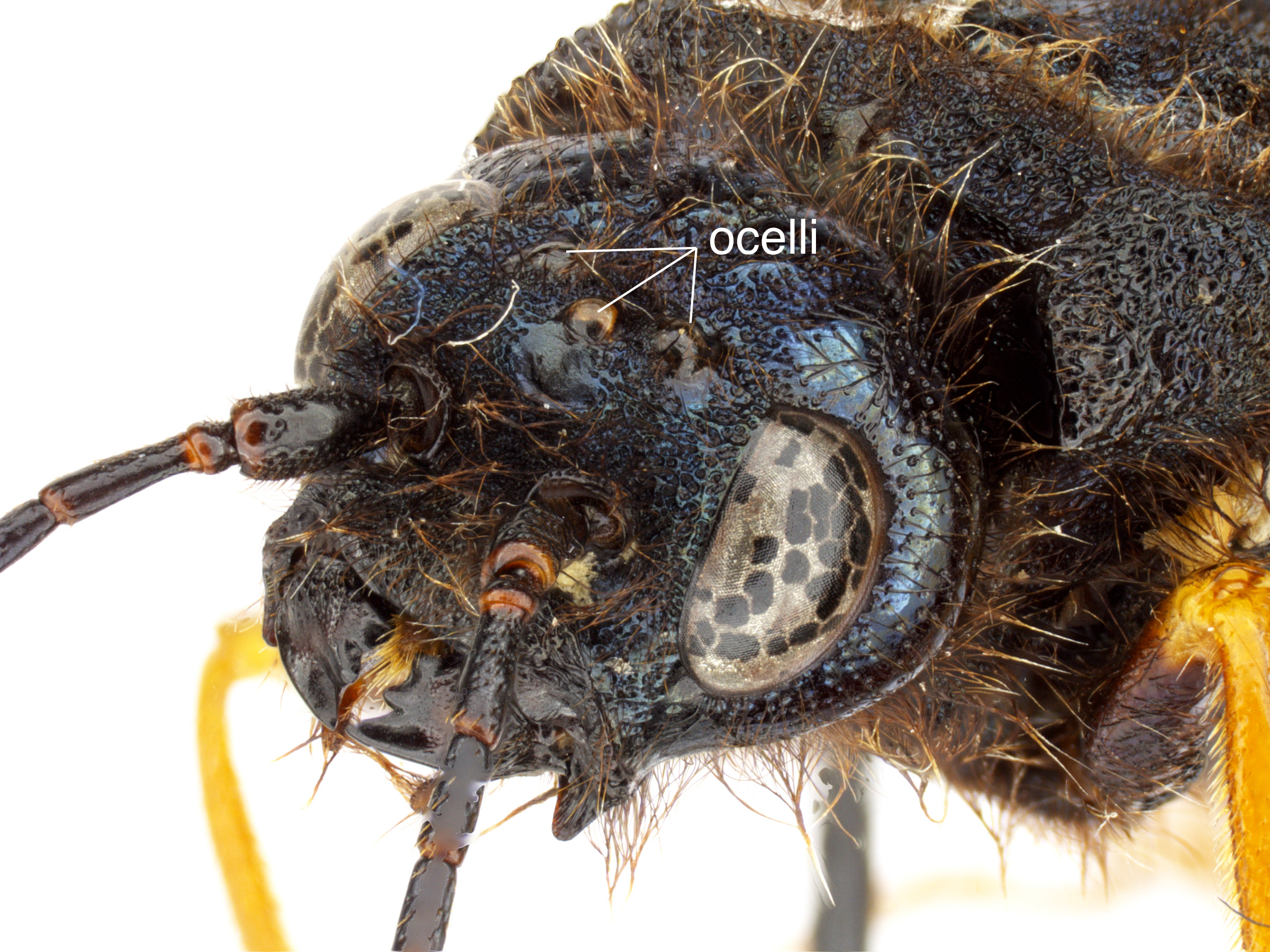 (Smith 1969aSmith 1969a:
(Smith 1969aSmith 1969a: deeply emarginated (Smith 1969aSmith 1969a:
deeply emarginated (Smith 1969aSmith 1969a: wider than long (Smith 1969aSmith 1969a:
wider than long (Smith 1969aSmith 1969a: veins M and Rs+M relatively widely separated on veinvein:
veins M and Rs+M relatively widely separated on veinvein: R (Goulet 1992Goulet 1992:
R (Goulet 1992Goulet 1992: vein 2A+3A curved upwards and meeting 1A (Goulet 1992Goulet 1992:
vein 2A+3A curved upwards and meeting 1A (Goulet 1992Goulet 1992: vein 2r-rs present (Smith 1969aSmith 1969a:
vein 2r-rs present (Smith 1969aSmith 1969a: vein 2A meeting 1A; basalbasal:
vein 2A meeting 1A; basalbasal: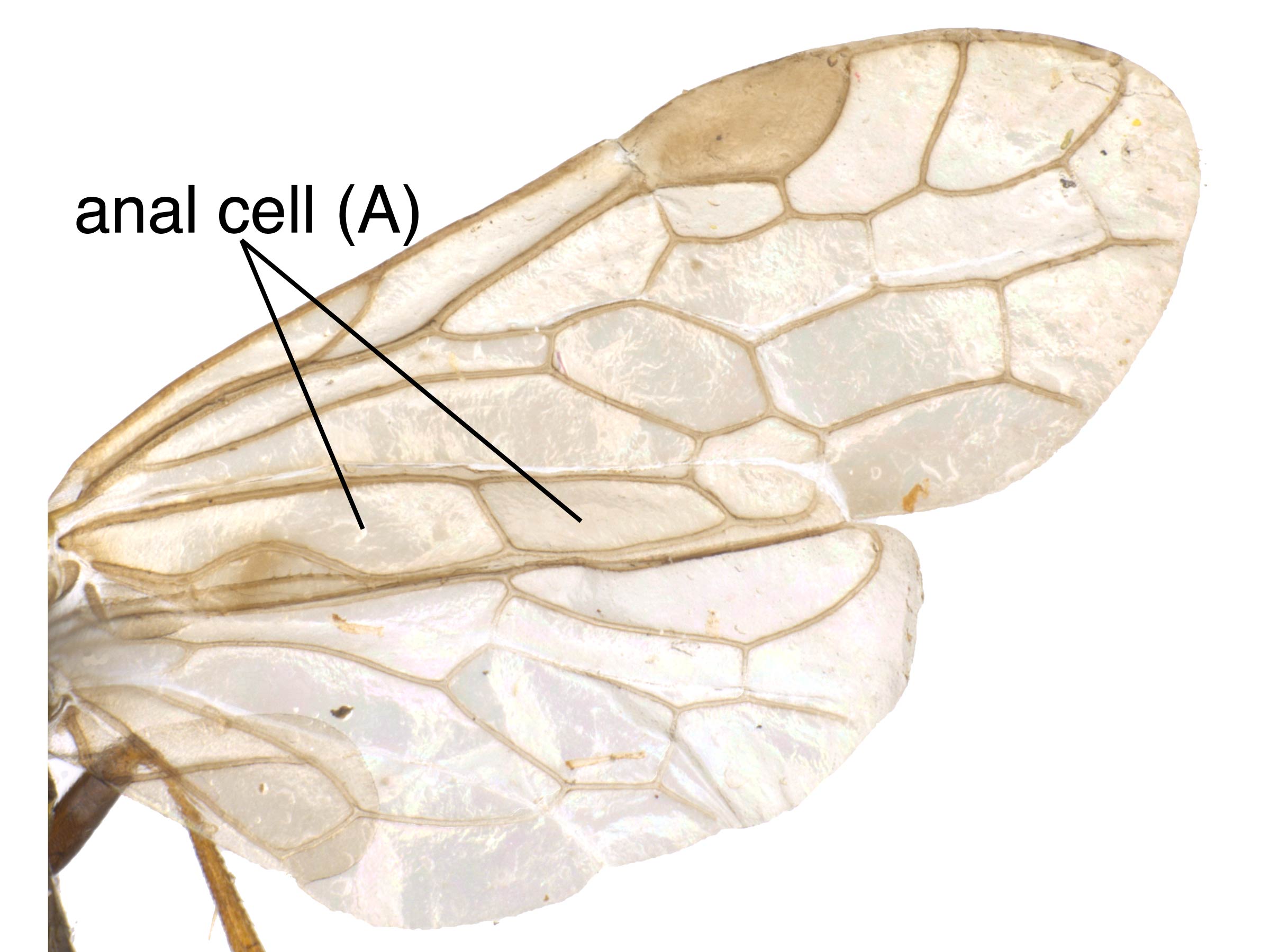 present (Goulet 1992Goulet 1992:
present (Goulet 1992Goulet 1992: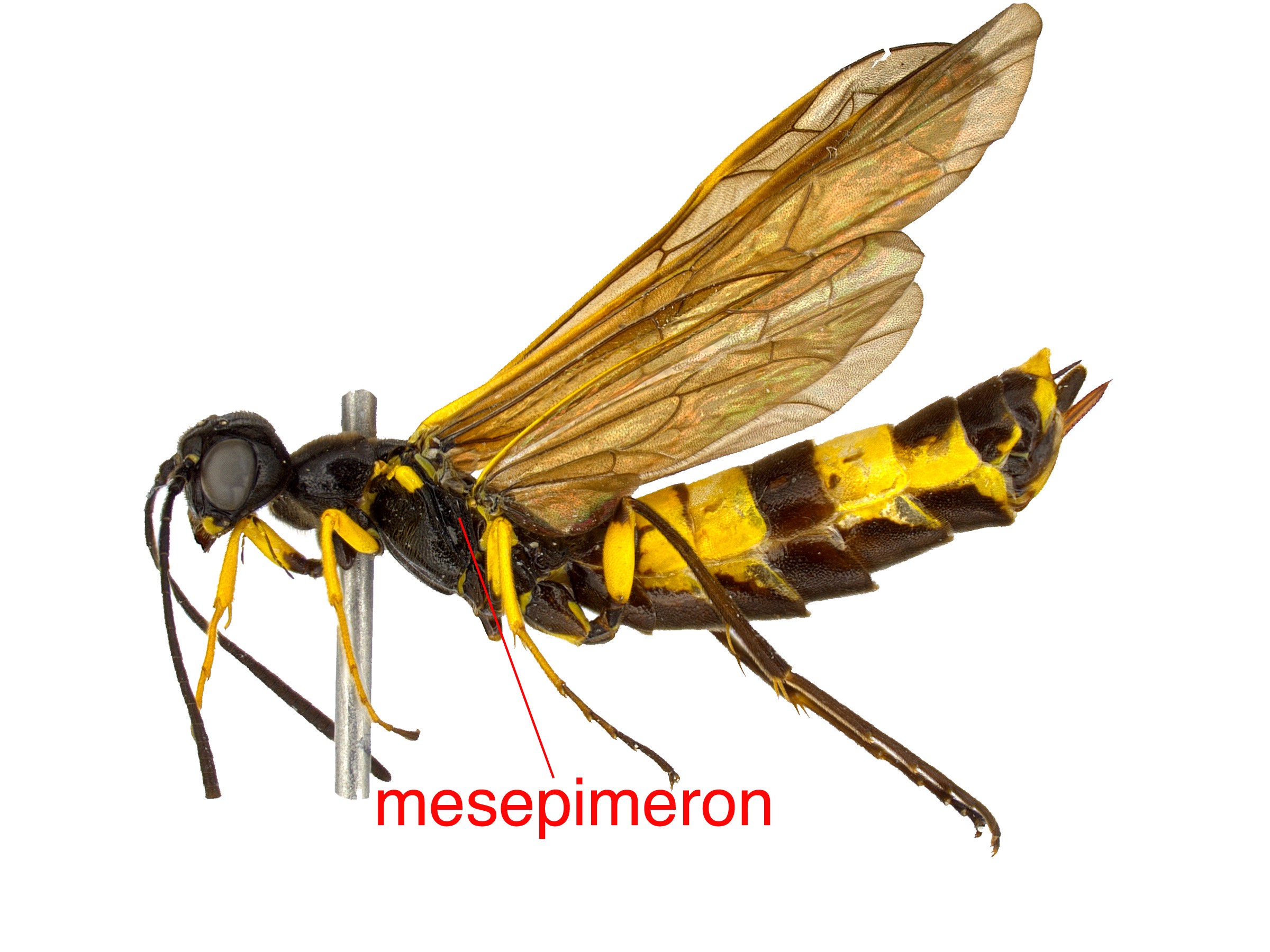 with several setaeseta:
with several setaeseta: with a short inner tooth (Smith 1969aSmith 1969a:
with a short inner tooth (Smith 1969aSmith 1969a:Craterocercus can be distinguished from other genera of Nematinae that have fore wingfore wing:
the anterior wing of each pair of wings; usually the largest wing of the pair
 vein 2A+3A curved upwards and veinvein:
vein 2A+3A curved upwards and veinvein:
a tube-like, often darkened, structure on the wings
 2r-rs present by the semi-circular emargination of the clypeusclypeus:
2r-rs present by the semi-circular emargination of the clypeusclypeus:
sclerotized area on the front of the head located between the antennal insertions and labrum
 , the short inner tooth of the tarsal clawtarsal claw:
, the short inner tooth of the tarsal clawtarsal claw:
sharpened appendage emerging from the apex of the tarsus
 , and the stocky antennaeantenna:
, and the stocky antennaeantenna:
the sensory organ emerging from the front of the head, usually between the compound eyes and above the clypeus; includes the flagellum, scape and pedicel
 (Smith 1969aSmith 1969a:
(Smith 1969aSmith 1969a:
Smith DR. 1969a. The genus Craterocercus Rohwer (Hymenoptera: Tenthredinidae). Proceedings of the Entomological Society of Washington 71 (2): 153-161., Goulet 1992Goulet 1992:
Goulet H. 1992. The genera and subgenera of the sawflies of Canada and Alaska: Hymenoptera. Symphyta. The insects and arachnids of Canada. Part 20. Agriculture Canada Publication.).
none
Craterocercus feeds on Quercus (oak) species (Smith 1969aSmith 1969a:
Smith DR. 1969a. The genus Craterocercus Rohwer (Hymenoptera: Tenthredinidae). Proceedings of the Entomological Society of Washington 71 (2): 153-161.).
Craterocercus are external feeders of leaves (Nyman et al. 2006aNyman et al. 2006a:
Nyman T, Farrell BD, Zinovjev AG, and Vikberg V. 2006a. Larval habits, host-plant associations, and speciation in Nematine sawflies (Hymenoptera: Tenthredinidae). Evolution 60 (8): 1622-1637.).
World: The genus is known only from North America (Taeger et al. 2018Taeger et al. 2018:
Taeger A, Liston AD, Prous M, Groll EK, Gehroldt T, and Blank SM. 2018. ECatSymmdash;Electronic World Catalog of Symphyta (Insecta, Hymenoptera). Program version 5.0 (19 Dec 2018), data version 40 (23 Sep 2018). Senckenberg Deutsches Entomologisches Institut (SDEI), Muuml;ncheberg. https://sdei.de/ecatsym/ Accessed: 28 Jan 2020.).
North America: Craterocercus occurs in the eastern United States as far west as Texas, the west coast in California and Oregon, and in Baja California and northern Sonora, Mexico (Smith 1969aSmith 1969a:
Smith DR. 1969a. The genus Craterocercus Rohwer (Hymenoptera: Tenthredinidae). Proceedings of the Entomological Society of Washington 71 (2): 153-161., Smith 2003bSmith 2003b:
Smith DR. 2003b. A Synopsis of the sawflies (Hymenoptera: Symphyta) of America south of the United States: Tenthredinidae (Nematinae, Heterarthrinae, Tenthredininae). Transactions of the American Entomological Society 129 (1): 1-45.).
Map data from: GBIF.org (29 October 2019) GBIF Occurrence Download Craterocercus
Details about data used for maps can be found here.